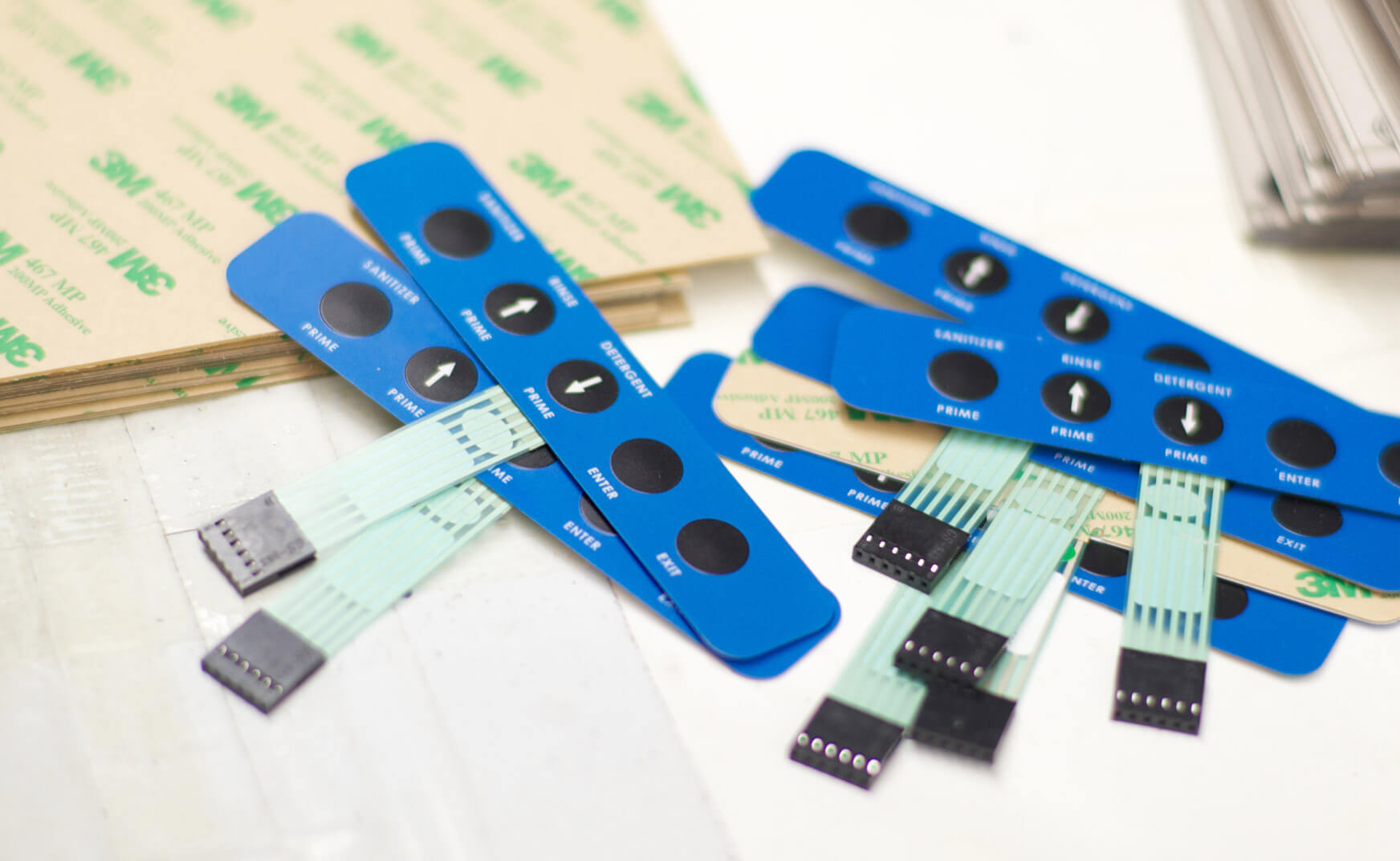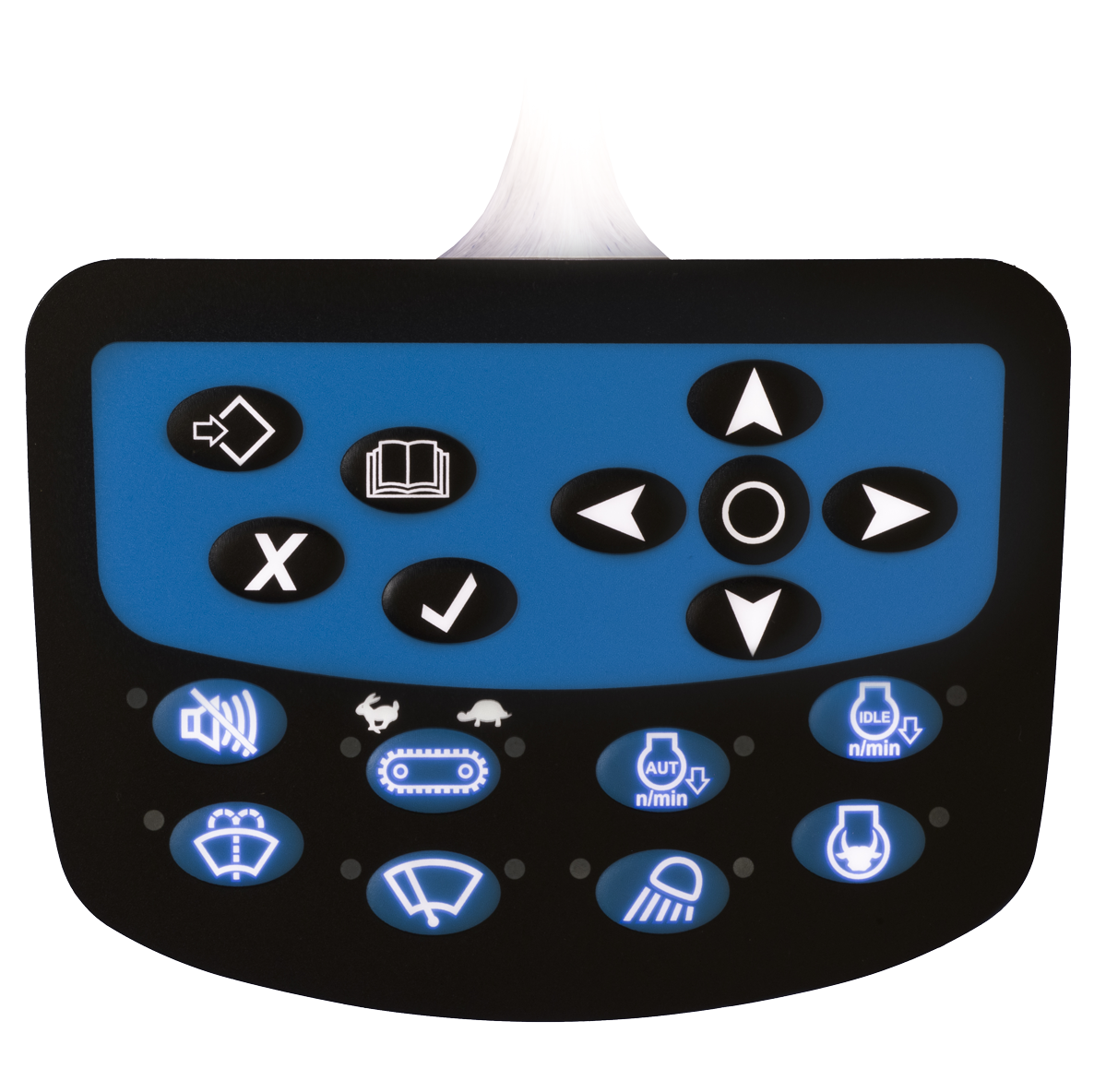Top Applications for Membrane Switches in Consumer Electronics
Understanding the Significance of Membrane Switches in Individual User Interfaces
Membrane switches are indispensable elements in the layout of efficient interface, promoting not only capability but additionally enhancing aesthetic charm and customer interaction. Their distinct features, such as resistance to adjustable designs and environmental variables, make them suitable for a varied array of applications across numerous industries. As we check out the future fads and various advantages related to Membrane innovation, it comes to be clear that these switches are greater than simply components; they represent a merging of innovation and functionality. The ramifications of this modern technology on user experience are worth taking a look at further.
What Are Membrane Switches?

The spacer layer, which consists of sticky residential properties, enables for the separation of the circuit layer from the overlay, ensuring that the button stays in a non-activated state until pushed. When stress is related to the overlay, it presses the spacer layer, connecting the gap and finishing the circuit in the underlying layer. This layout not only reduces the physical room required for traditional mechanical buttons however also boosts the sturdiness of the device, as Membrane switches are usually resistant to dirt, wetness, and other ecological elements.
Commonly discovered in applications ranging from customer electronics to clinical devices, Membrane switches are important to modern innovation, offering a straightforward and effective user interface that aligns with modern design demands.
Advantages of Membrane Buttons
While various button technologies exist, Membrane Switches deal distinct benefits that make them particularly desirable in numerous applications. Among the primary advantages of Membrane switches is their small layout, which enables space-saving applications in tools where realty is limited. Their slim account not only improves visual allure but likewise promotes lightweight building.
One more substantial advantage is their resistance to environmental elements. Membrane buttons are typically sealed against wetness, dirt, and impurities, making them perfect for use in demanding settings, such as clinical devices and commercial tools. This resilience prolongs the life expectancy of the button, lowering upkeep prices and enhancing reliability.
Furthermore, Membrane switches can be customized to satisfy particular style demands, integrating special graphics and shades that improve individual interaction. Their tactile comments choices can likewise be tailored to offer a rewarding customer experience. In addition, Membrane buttons are affordable, specifically in high-volume applications, as they can be generated successfully.
Applications in Different Industries

In the consumer electronic devices industry, Membrane switches are prevalent in gadgets such as microwaves, washing equipments, and remotes. Their tactile responses and aesthetic options improve user experience while supplying a sleek, modern-day look. In addition, automobile suppliers utilize Membrane switches in dashboard controls browse around this web-site and infomercial systems, where area is restricted, and user interaction is crucial.
In addition, the industrial market leverages Membrane switches in control panels for equipment and tools, permitting instinctive operation in commonly harsh atmospheres. Their resistance to chemicals and dampness ensures durability and integrity in these applications. Overall, the versatility of Membrane Switches contributes substantially to their prevalent use, making them important in numerous technical domains.
Style Factors To Consider for Membrane Buttons

When designing Membrane switches, several essential considerations need to be taken right into account to make certain optimum functionality and user experience. The choice of materials is crucial; selecting durable, top quality substrates can boost the button's durability and resistance to environmental elements such as moisture and temperature variations.
Second of all, the style of the graphic overlay should focus on quality and simplicity of use. Symbols and message need to be clear, and the layout should promote user-friendly interaction (membrane switches). Additionally, responsive comments is important; incorporating a responsive dome or other mechanisms can boost the individual experience by providing physical verification of activation
One more important variable is the button's electric efficiency. Designers must make sure that the conductive traces are appropriately designed to decrease resistance and prevent signal disturbance. This includes evaluating read review the called for actuation force and making certain compatibility with the electronic components they will certainly user interface with.

Future Patterns in Membrane Technology
As innovation proceeds to advancement, Membrane switches are poised to advance considerably, driven by technologies in materials and producing strategies. One emerging pattern is the unification of advanced materials, such as flexible substrates and conductive inks, which boost durability and minimize the total weight of Membrane switches. These materials not only enhance the responsive response but likewise permit for the layout of switches that can endure harsher environmental problems.
In addition, the assimilation of touch-sensitive technologies is transforming conventional Membrane Switches right into even more interactive interface. Capacitive touch sensing units installed within Membrane button panels can provide a more user-friendly and responsive individual experience, lining up with the expanding need for smooth, contemporary layouts in customer electronic devices.
Furthermore, innovations in printing strategies, such as electronic and 3D printing, make it possible for quick prototyping and modification of Membrane switches. This versatility enables producers to respond quicker to market demands and consumer choices.
Last but not least, sustainability is coming to be a considerable focus, with producers exploring environmentally friendly materials and procedures. As these fads unravel, the future of Membrane technology assures boosted performance, aesthetic appeal, and ecological duty, solidifying their role in innovative interface across various sectors.
Final Thought
In verdict, Membrane Switches represent a vital component in the style of individual interfaces, incorporating performance with aesthetic adaptability. As advancements in technology proceed, the development of Membrane switches is anticipated to more refine user interfaces, driving innovation and enhancing usability in a significantly intricate technical landscape.
Membrane buttons are indispensable parts in the design of effective customer interfaces, facilitating not just capability yet also improving aesthetic charm and customer interaction.Membrane Switches offer as an essential component in different user interfaces, facilitating a smooth communication in between users and electronic gadgets.While numerous button modern technologies exist, Membrane Switches deal distinct benefits that make them particularly desirable in different applications.Furthermore, Membrane buttons can be customized to fulfill certain style requirements, integrating distinct graphics and shades that enhance user communication.In final thought, Membrane Switches stand for an important part in the layout of customer interfaces, combining performance with aesthetic flexibility.